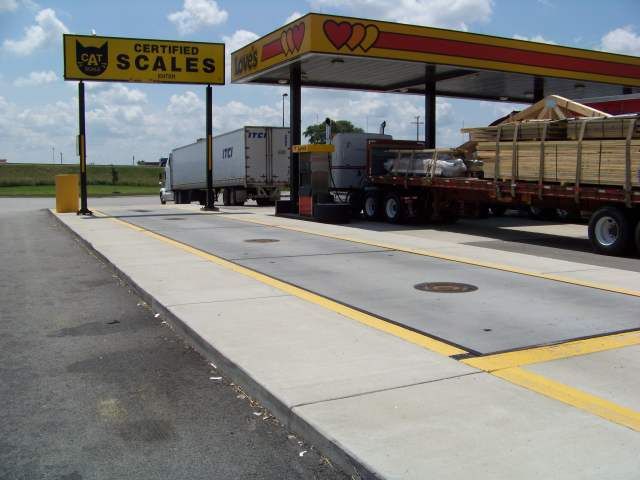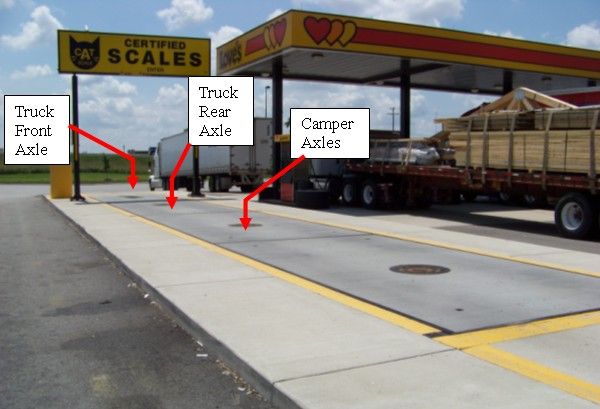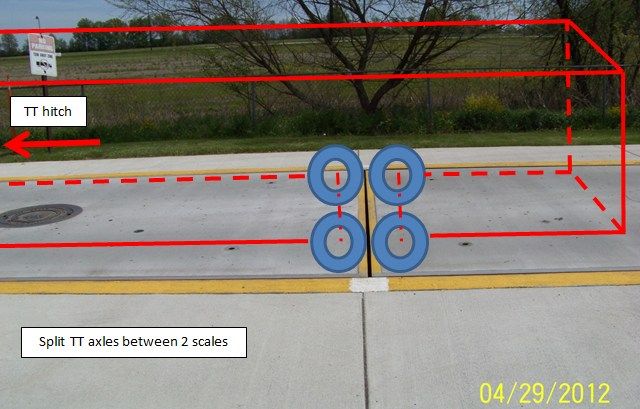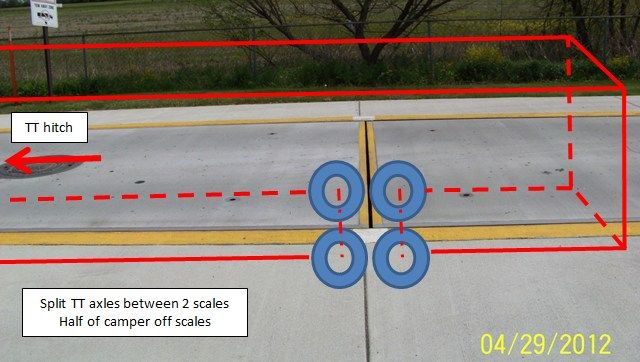- Good Sam Community
- Groups
- Travel Trailer Group
- Forum
- Trailer leaning to the one side?
- Subscribe to RSS Feed
- Mark Topic as New
- Mark Topic as Read
- Float this Topic for Current User
- Bookmark
- Subscribe
- Mute
- Printer Friendly Page
Trailer leaning to the one side?
- Mark as New
- Bookmark
- Subscribe
- Mute
- Subscribe to RSS Feed
- Permalink
- Report Inappropriate Content
Feb-10-2017 08:20 AM
Trailer is a 2015 32rlss cruiser viewfinder signature. Took it to a shop to have some extended warranty work done including replacement of the springs under that warranty. They just called and said that the springs are acting as they should under the heavier weight of that side. Said the warranty would not over replacement. Should I replace all four leaf springs with the next size up? Will that make it ride level or will it still sit lower on that side? Is it a safety concern in that that trailer will behave negatively with it leaning?
Or am I being overly anal on this and should I just leave it be?
- Mark as New
- Bookmark
- Subscribe
- Mute
- Subscribe to RSS Feed
- Permalink
- Report Inappropriate Content
Feb-21-2019 12:45 PM
The answer is yes if the spring is on top of the axle tube. If this is the case you can add a block and longer U bolts on the low side to level it out.
The answer is no to maybe if the spring is under the axle tube. With the spring under the axle tube you would have to put the block under the high side to lower the trailer by 1/2 inch on that side.
Be aware that spacer blocks for leaf springs are not just square flat blocks. Leaf spring packs have a bolt that goes vertically through the center of the pack. The spring pad on the axle tube has a hole in the center for this bolt head to sit in and center the spring. The lift block needs a hole on one side to accommodate the bolt head, and a bump on the opposite to drop down into the hole in the axle tube plate.
You might find it hard to locate a lift block that is only 1/2 inch tall. Although now that I think about it; If the center bolt has excess threads you could drill a hole through the center of a 1/2 inch plate and put it into the spring pack at the bottom using the existing bolt to hold it all together. That would eliminate the need to find a manufactured spacer with the bump and hole and just use a piece of flat steel.
2001 Suburban 4x4. 6.0L, 4.10 3/4 ton **** 2005 Jayco Jay Flight 27BH **** 1986 Coleman Columbia Popup
- Mark as New
- Bookmark
- Subscribe
- Mute
- Subscribe to RSS Feed
- Permalink
- Report Inappropriate Content
Feb-21-2019 12:20 PM
- Mark as New
- Bookmark
- Subscribe
- Mute
- Subscribe to RSS Feed
- Permalink
- Report Inappropriate Content
Feb-21-2019 08:03 AM
The real question is how does it tow? Presume you've put some miles on it.
Do you actually notice an issue towing or is it just a visual thing?
Could always stick the mother in law in the camper and have her sit on the high side!
2017 Heartland Torque T29 - Sold.
Couple of Arctic Fox TCs - Sold
- Mark as New
- Bookmark
- Subscribe
- Mute
- Subscribe to RSS Feed
- Permalink
- Report Inappropriate Content
Feb-20-2019 06:21 PM
If I were to put a shim under that spring on the lower side, to bring the camper to level side to side, would that cause any problems?
It would sure be nice to be able to just pull into a level site and not have to put down any boards to level. I wonder if the shim leveling the unit would also reduce any chance of sway or give me an even better controlled ride.
Thanks
- Mark as New
- Bookmark
- Subscribe
- Mute
- Subscribe to RSS Feed
- Permalink
- Report Inappropriate Content
Feb-14-2017 03:39 PM
2015 Silverado 2500HD 4x4 6.0 l gasser.
Equilizer 4 pt
From Belle River, Ontario
2003 Mountain Star 890sbrx Truck Camper
- Mark as New
- Bookmark
- Subscribe
- Mute
- Subscribe to RSS Feed
- Permalink
- Report Inappropriate Content
Feb-14-2017 02:39 PM
- Mark as New
- Bookmark
- Subscribe
- Mute
- Subscribe to RSS Feed
- Permalink
- Report Inappropriate Content
Feb-14-2017 08:22 AM
I considered shimming under the springs but continued to worry that the springs on that side were flatter than other side. Replacing springs with the same capacity is a waste of time IMHO. And putting stronger springs on the same axle seems to (slightly) increase the chance of bending the axle since the shock loading on bumps would be increased with stiffer springs.
After searching all winter FINALLY found a trailer shop nearby that does modifications. The guy crawled out from under it just shaking his head, said the whole suspension system was too loaded. I was due for tires this spring anyway, and he cut me a good deal on replacing the Lippert 4 leaf axles with 5,200 lb Dexters at 5 leaf. They should be here this week.
He said he re-axles A LOT of travel trailers.
Our trailer is likely heavier on that side, but with stronger springs the lean should be small enough not to notice. I'm really excited about taking this off my worry list!
2014 Forest River Cherokee 264
Prodigy II / Equalizer 10K
103 nights & 12,700 miles since April '13
- Mark as New
- Bookmark
- Subscribe
- Mute
- Subscribe to RSS Feed
- Permalink
- Report Inappropriate Content
Feb-11-2017 07:25 PM
And yes, a 4,400 lb rated axle, "normally" comes with qty, 2, 2,200# spring packs. One at each end.
But, there is always a but... The VIN tag and the tire placid is required to state the weakest component in the axle system. It could be the axle tube, the springs or the tire/wheel.
But, in this case you said originally it had ST 235/75R15's Load range D. I guessed you meant 235/75R15's and not 205/75R15's. The 205's are very different, even the OD is not the same. And if it had ST 235/75R15 LR D, then that was not the limiting axle item as that capacity is much greater. 4,400# is an axle size and they normally put 2,200# springs on it. They cannot put smaller spring capacity and declare the 4,400# placard rating.
Truck scales, If there is a Loves, Pilot, Flying J or some other truck stop, they should all have truck scales. Recycling centers, gravel banks also have scales.
- Mark as New
- Bookmark
- Subscribe
- Mute
- Subscribe to RSS Feed
- Permalink
- Report Inappropriate Content
Feb-11-2017 06:37 PM
I did replace the cheap tires that came on it last fall. It came with load range D, I went with the new Carlisle radial trail HD in load range E. Size st225/75/15. They are rated for 2,830 lbs each.
So I need to find a place to get it weighed at each tire and then go from there. Since the axle is rated for 4,400 I can at least be assured that each spring pack is rated for 2,200 then?
Thanks again for all your help. Any ideas for finding a place to weigh it Y each tire?
- Mark as New
- Bookmark
- Subscribe
- Mute
- Subscribe to RSS Feed
- Permalink
- Report Inappropriate Content
Feb-11-2017 04:15 PM
rsaylor3 wrote:
When I did my measurements it was on level ground, trailer leveled front to back. I measured from where the spring hanger brackets are welded to the frame on each side to the ground. I am 1/2" lower on that side. This is consistent with both sets of spring hanger on each side. From eye to eye they are 24" on the good side and 24 1/4" on the low side.
Axles are lippert #4400. 3".
Weight when loaded is right at 8,800 total trailer weight, with 7,660 on the axles. Never did front axle to back for comparison, but I do tow pretty darn level.
This is good info and different then the first time with 1" difference. You did the measurement the right way. Camper level front to back, hard surface and frame to ground at the hangers
You are 1/2" difference ground to bottom of frame and the eye to eye on the springs shows the heavy side is longer too which aligns with the lower ride height. This may be what this size spring constant gives you.
And Cruiser gave you 4,400# axles on a 35' 4" long 9,455 GVWR camper. They down sized the axles to "just" fit. But they built the floor plan where the right side can be heavier with that large cargo space.
What you are seeing may be what it is going to be with 4,400# axle "tubes" and springs. What tire size/load range did they give you?
Individual wheel weights will help confirm you are not sitting at or close to 2,200# on that side per wheel. And tell you where your tire loads are.
Since you are now 1/2" lower and not 1", the 1/2" is not as much a concern as tire/axles loading on that side. The springs may well be doing what that size is telling them to do.
Once the wheel weight data comes, then you will know what you are up against. You just maybe out of capacity on that side of the camper and cargo may have to move. I know that can create it's own set of issues, but this may be what they sold you.
In case you did not know, if you are thinking putting larger springs in, the axles tubes, wheels and tires should go up as well. This is no longer very simple, well simple yes, cost no. And then the size of the main frame rails will come into question.
Did they set this camper up on 8" tall frame rails or 10" and what are the flange and web size/thickness?
Before the 4,400# axle came along about 8 to 10 years ago, a trailer this size would have 5,200# axle tubes as that was the next jump above the 3,600# axle tube. Granted they could teak the spring rate lower, but the trailer got the heavier tubes.
There are 2 ways in the industry to size the axles/running gear to the GVWR. Each camper mfg does this different.
1. They let the truck hold part of the GVWR on the tongue and the axles and running gear can be down sized to hold what is not part of dry tongue weight.
2. They size the axles and running gear to hold the entire GVWR. This allows some freedom in loading the camper and gives you extra safety margin.
The cost between option 1 and 2 is not that much, but when you make hundreds and thousands of them, that savings to the mfg adds up.
Your learning, good for you to realize this before tire issues come.
Hope this helps.
John
- Mark as New
- Bookmark
- Subscribe
- Mute
- Subscribe to RSS Feed
- Permalink
- Report Inappropriate Content
Feb-11-2017 03:08 PM
When I did my measurements it was on level ground, trailer leveled front to back. I measured from where the spring hanger brackets are welded to the frame on each side to the ground. I am 1/2" lower on that side. This is consistent with both sets of spring hanger on each side. From eye to eye they are 24" on the good side and 24 1/4" on the low side.
Axles are lippert #4400. 3".
Weight when loaded is right at 8,800 total trailer weight, with 7,660 on the axles. Never did front axle to back for comparison, but I do tow pretty darn level.
- Mark as New
- Bookmark
- Subscribe
- Mute
- Subscribe to RSS Feed
- Permalink
- Report Inappropriate Content
Feb-11-2017 12:02 PM
'71 Starcraft Wanderstar -- The Cowboy/Hilton
- Mark as New
- Bookmark
- Subscribe
- Mute
- Subscribe to RSS Feed
- Permalink
- Report Inappropriate Content
Feb-11-2017 11:11 AM
rsaylor3 wrote:
I love the shim idea. I have my weight loaded and I'm within GVWR, and I'm right at 13% tongue weight.
How would I measure my side to side weights?
OK, I missed this reply.
The weights you have, did you split the front and rear axle weights so you know a total front and total rear axle weight. And if so what are they?
To do left side and right side, here is one method. You have to find the correct scale to allow this as some have guard rails right at the side of the scale.
See here in pics
Find a scale that does not have side guards and ideally has a split scale. The split scale is not a mandate, but helps with less trips over the scale.
These truck scales are 3 section scales so you can weigh multiple axles at one time. The truck stops are designed around be able to weigh a 75,000# semi in about 2 to 3 minutes.


You need to split the axles between 2 scales. This gives you total front axle and rear axle.

Then go around again and partly pull off the scale with one set of wheels. The other set is now split between 2 scales.

Then do the math to subtract the left side from the right side. You can now determine all 4 wheels weights and left and right side. This helps on the sagging springs and the tire loads. Also, make sure your weight distribution is engage when doing this. That adds weight on your front axle.
Make sure you are fully loaded with all camping gear and water that you tow with.
It is best to go inside and talk to the manager about what you are doing so they know and can help. I bring my own walkies talkies as I do not have a truck CB. I give one to the scale attendant on when to take a weight and a little to the rear axle. And some scale places will not allow you op be half on and half off. Again ask first.
Hope this helps
John
- Mark as New
- Bookmark
- Subscribe
- Mute
- Subscribe to RSS Feed
- Permalink
- Report Inappropriate Content
Feb-11-2017 10:56 AM
rsaylor3 wrote:
Springs on that side are sagging 1" more than the other.
Should I replace all four leaf springs with the next size up? Will that make it ride level or will it still sit lower on that side? Is it a safety concern in that that trailer will behave negatively with it leaning?
Or am I being overly anal on this and should I just leave it be?
Hi,
A few questions.
Where did you measure the 1" difference between the left and right side? Try and be specific where you placed the tape measure.
Was the camper on a hard and level surface when you measured?
Was the camper leveled front to back when you took the measurements?
I looked up your camper. Found this online 2015 brochure. 2015 Cruiser Catalog
Before I would start upgrading springs, tires or shimming, I would need to know technically what the exact problem is. I fully agree with the posts stating, you need to weigh the camper so you can get scaled weights of both sides of the camper. Meaning you have a weight for the curb side (right) and the road side (left). While many campers are not balanced exactly even, how much weight difference you have will be a good piece of info.
Your floor plan, (a nice one congrats!) allows more weight storage on the door side. You also have a 35' 4" long camper with a 9,455# GVWR. That is a good sized camper.
Once armed with scaled weights and we can understand how you determined the 1", this will help.
Your main frame rails can only hold so much weight and deal with everything that comes at you towing down the road. Potholes and RR crossings create a big dynamic impact. The over hung load behind the rear axle is all held by the way the main frame is made and reinforced. Can you measure the main frame? There is an assumption it is a I beam style, but you confirm this. Need to overall height, the width of the flanges and the thickness of the web and the flanges. Try and be as accurate as you can. Being 1/16" off is too much.
By chance, do you have shock absorbers and do you have a rigid solid steel equalizer?
Once you have some good data, suggest a call to Cruiser and ask for customer technical service and ask them if that amount of unbalanced loading and the weights themselves are acceptable for your main frame rails.
And if the frame is OK, then a real good look at tire capacity and how much reserve capacity do you have? It is becoming more common now to be looking for 20% excess tire load capacity over the heaviest wheel location when dealing with tandem axle. What size tires and load range are you on now? What is the axle ratings? This should show on the VIN sticker with the yellow tag load and tire ratings.
Point being, this 1" difference might be the early signs of bigger issues down the road. You are not being anal about asking and or worrying about this. I say, congrats to you for being observant and let's see if you can figure out why.
Hope this helps
John





